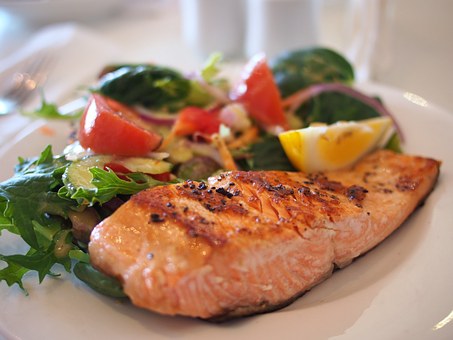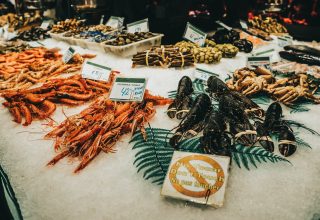How salmon seafood is cooked depends upon whether it has a high, medium, or low-fat content. The ones that have high-fat content fall into the oily category which has 180 calories. Medium fat content is about 150 calories per serving and low fat can be from 116 to 120 calories per serving.
All types of salmon are good sources of omega-3 containing only 75 milligrams of cholesterol. While fresh salmon is low in sodium, it varies with canned or smoked salmon. For example, canned pink salmon can have 554 milligrams of sodium.
Salmon steaks and fillets can be broiled, grilled, poached, sauté, steamed, and baked. A lemony or lime-based marinade can create a unique flavor. Cold, cooked salmon and canned salmon can be used as a substitute for meat in hamburgers and patties, in cold salads and mousses. You can follow this link where is available salmon for sale.

Don’t freeze Salmon again and again. There are six major salmon species, one from the Atlantic Ocean and the others from the Pacific Coast. The differences between the species are:
Atlantic salmon can be wild or farm-raised and may be marketed according to its source, for example, Norwegian or Icelandic. It is a rich-tasting fish, red or orange when it is raw and turning pink when cooked. The flesh is somewhat softer than other species.
Chinook salmon is marketed by where it was caught. It is an oily fish, relatively soft and red in color.
Coho salmon is sometimes called silver salmon and is medium red in color. It is less oily and turns orange or pink when cooked.
Sockeye salmon is prized for its deep-red flesh. It is sometimes labeled as blueback salmon.
Chum salmon may also be called silverbrites and semibrites. The flesh is on the orange side and it is lighter in both color and taste than other Pacific types. Most chum is sold frozen or canned. It tends to turn pink or gray when cooked.
Pink salmon are the smallest of the species and are sometimes called “humpies.” The flesh is softer and pinker compared to the other species of salmon. It can sometimes be found fresh but most pink salmon is canned.
Salmon found in most gourmet sections of general supermarkets and at finer food markets where smoked foods have featured aisles, smoked salmon is reliably available.
It is considered a delicacy to most; it is used often during the holiday season and is given in boxed gift sets. Many of these gift boxes come with specialty items including gourmet crackers and spreads of specialty mustards and cheeses to accompany the taste of the salmon. Some of the pricier gift sets can also contain bottles of specialty wines or sparkling ciders, meant to compliment the flavors of the smoked salmon.
Most smoked salmon purchased in America hails from the Atlantic. This gives rise to the name “Atlantic Salmon” which is the most commonly sold in American stores today. While salmon used in smoking is most notably supplied from the Norwegian salmon farming markets, freshly caught salmon is also used and harvested yearly per season from Chili or Canada’s east coast region. Norwegian salmon is considered of better quality than the generally caught salmon which is commonly more available in the American market. Norwegian salmon is farmed using certain feeding and breeding techniques which are said to enhance the flavor and tenderness of the finished smoked salmon product. The island of Ireland is surrounded by the Atlantic Ocean. Its clean unspoiled waters are the habitat of a vast variety of fish, shellfish, and crustaceans and It is the ideal environment for a premium salmon.
While most smoked foods are generally prepared using prolonged, high heat generated flavoring techniques, smoking salmon can be done either of two ways including hot smoking or cold smoking the fish. In hot smoking, the fish is prepared overheated and slow-burning embers, which slowly removes moisture from the meat. Some who have a preference for a dryer salmon with a firmer texture might choose this method of smoked salmon preparation. Cold or cool smoking of the salmon, suggests using a smoking method where the smoke room temperature stays between 68 and 90 degrees Fahrenheit. Cold smoking produces decidedly tender salmon meat with a lighter and sweeter smoked flavor.












